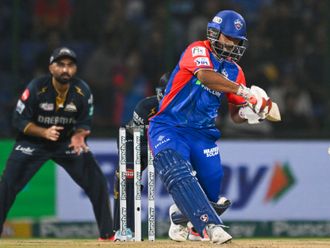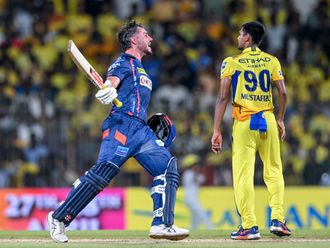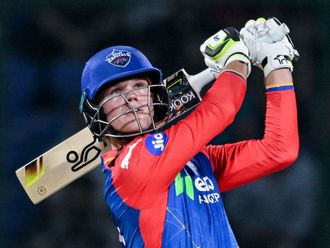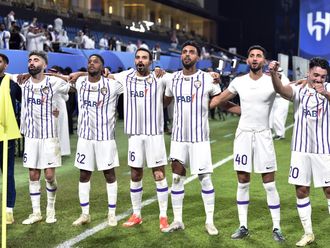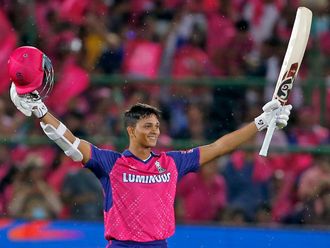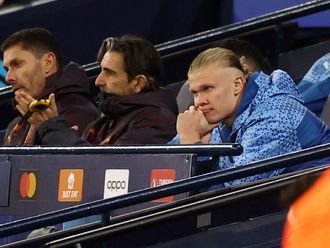YES
By Gautam Bhattacharyya, Sports Editor
It may sound harsh but the ground reality is that ever since the Indian Premier League (IPL) has taken roots in 2008, it has slowly made the domestic cricket structure of India — which has a rich history — look irrelevant for the average follower of the game.
Now, I can see some sneer from a section of the purists, but a basic quiz for the man on the street will endorse my point. Ask them which team has been the last winners of the Ranji Trophy (India’s premier domestic tournament), Vijay Hazare Trophy (interstate one-day
tournament) and Syed Mushtaq Ali Trophy (interstate T20 event)?
While some can still get the Ranji winner right after the fairytale success of Vidarbha, I have serious doubts about the number of correct answers for the other two queries.
Compare this with a quiz on last year’s winners of the IPL and chances are everyone will raise their hands for the winners or even the ‘tough’ ones like the holders of the Orange Cap, Purple Cap etc. A decade of IPL has created a new breed of cricket followers in India who will rattle off the nitty gritty of the auction, but may not be conversant with the history of the Ranji Trophy.
What’s more, the IPL has also — in more cases than one — provided the springboard for promising cricketers to make their way to the national teams. The likes of Suresh Raina, Ravindra Jadeja, Lokesh Rahul, Hardik Pandya or a Kuldeep Yadav have all worked their way from the razzmatazz of IPL to the Indian team and proved their quality there.
Mind you, it’s ultimately their quality, which has helped them withstand the rigours of international cricket, but gone are the days when a certain Rahul Dravid or a VVS Laxman would have had to score bagfuls of runs to merit a call-up to the Test squad.
The Mushtaq Ali Trophy is the one which merits attention from the IPL talent scouts to go for the uncapped domestic players. To be fair to the Board of Control for Cricket in India (BCCI), it’s technical committee does try to innovate with the formats of these tournaments often to make the season a little more appealing, but the overpowering impact of IPL has ensured that the domestic calendar has lost its sheen like in the past.
NO
By A.K.S. SatishSenior Pages Editor
With so much attention centred on the glitzy Indian Premier League, one tends to forget the importance of the domestic circuit. No doubt the Twenty20 extravaganza has played a pivotal role in boosting the bench strength of the Indian team and has been a constant supply chain for the national team in various formats.
However, looking back at the process, one should not forget that it is on the strength of the performances of these players in the domestic events that they get picked for big sums in the IPL auction. The talent scouts of each and every franchise are constantly monitoring the performances of these players to strengthen their squads in the IPL.
The likes of Mayank Markende and Krishnappa Gowtham rise to IPL fame on the basis of their domestic form, while on the contrary some big names who donned India colours don’t get picked by IPL teams should their form dip. Most of the India Under-19 players have also caught the eye of the franchises with their performances in the junior World Cup. It is a sad state of affairs that their performances for their state teams, be it the Ranji Trophy or the shorter formats, don’t gets highlighted as much as their efforts in the IPL due to the far greater reach and audience of the glamorous Twenty20 league.
Vidarbha, the champions of the Ranji Trophy, might not have high representation in the IPL, but take the case of Delhi, the runners-up, or Karnataka, who lost to the eventual winners Vidarbha by five runs in the semi-finals. About nine players each from Delhi and Karnataka are representing one franchise or the other, while the other quarter-finalists this year — Bengal, Mumbai and Gujarat — have a few representatives as well.
The barometer for selection to the Indian team in the past, when players like Ravichandran Ashwin, Rohit Sharma and Murali Vijay were fast-tracked on the basis of their eye-catching efforts in the IPL, has undergone a perceptible change of late.
Taking care not to undermine the domestic structure, the Indian board has made it mandatory for India’s international players to take part in domestic events when they are available and made it compulsory for players to prove their fitness in matches for their state before getting the all-clear to come back into the national side after injuries.
A look at the current Indian team will suggest that most of these top-performers like Rishabh Pant or Sanju Samson have only been selected to the India ‘A’ team and not the first team. It’s a clear message that though their efforts are recognised they have been put to tougher tests to show their worth. As the saying goes, form is temporary and class is permanent; a class player will find his touch and make his presence felt in all events.


